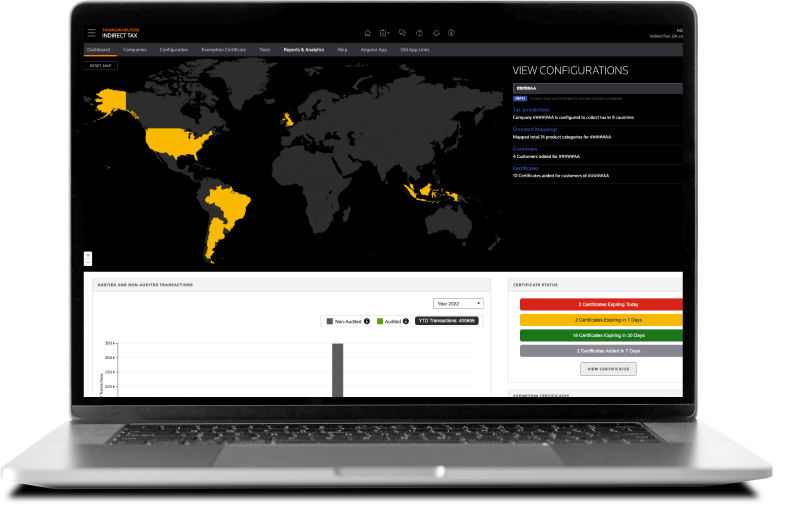Jump to:
| Strategic preparation: The key to AI integration |
| Understanding business needs and cultivating partnerships that prepare for AI |
| Key considerations for implementing AI in tax and finance business processes |
| Next steps for businesses to prepare for AI |
For more than a decade, artificial intelligence (AI) has been weaving its way into tax and finance business processes, yet its expansion has accelerated dramatically in recent years. As the industry undergoes a profound transformation, leaders are currently investigating the vast opportunities AI has to offer.
As businesses strive to stay relevant and competitive in a digital age, understanding and implementing AI in tax and finance operations has become a necessity for future growth and sustainability. This blog explores AI’s transformative impact in these sectors, highlighting key applications, potential benefits, and strategic considerations for organizations seeking to harness the power of AI effectively.
At SAPinsider Las Vegas 2024, industry leaders from the finance and tax sectors held a panel discussion to explore the transformative impact of AI in their fields. Kelley Lear, Vice President of Partnerships & Alliances at Thomson Reuters, shared a holistic approach to the present state and future outlook of AI technology. Joining her were Patrick Callahan, Vice President of Tax at Bridgestone America, and Andrea Gronenthal, a Partner specializing in Tax Technology and Transformation at Ernst & Young (EY). These experts shared their experiences and strategies for integrating AI into finance and tax business processes, offering valuable insights for organizations on the cusp of technological transformation.
Strategic preparation: The key to AI integration
The consensus among the panelists was clear: the integration of AI into finance and tax functions is not only inevitable, but also imminent. However, they stressed the necessity of strategic preparation for this shift.
Callahan pointed out that while the full impact of AI might still be a few years away, companies must begin preparations now. This includes forming meaningful partnerships that can gradually introduce AI capabilities. Assembling key partners with extensive experience in your technology ecosystem and a global understanding of regulatory environments enables companies to strategize more effectively and mitigate risks during implementation.
Lear highlighted the proactive steps Thomson Reuters has taken towards embracing AI, through a build, partner, and buy strategy. The company aims to enhance its technological capabilities significantly, starting with adopting AI learning objectives within its teams, developing best practices, and planning substantial financial investments into AI technologies annually.
Thomson Reuters collaborates with various technology business partners such as SAP and leverages its own resources as it looks to expand AI technology into its products. This approach ensures readiness for integrating AI effectively into finance and tax processes as technology evolves. This multi-faceted approach will allow Thomson Reuters to provide customers with innovative, trusted technologies faster, and incorporate feedback loops to optimize effectiveness.
|
|
Understanding business needs and cultivating partnerships that prepare for AI
Successful AI implementation hinges on a deep understanding of the business’s scope and needs. This understanding should span finance, treasury, audit, risk, supply chain, and other processes, including data and technology across the business.
Callahan emphasized the importance of defining what success looks like for the tax function and identifying the capabilities needed to achieve these goals. This strategic approach ensures that AI implementation is aligned with business objectives and delivers tangible benefits.
Lear and Gronenthal pointed out the importance of partnerships and adopting an end-to-end approach in AI projects. They utilized an EY wavespace™ session as part of a joint project, bringing together technology and business teams to analyze and enhance critical areas of business processes. In this case, leadership also focused on key AI OKRs they wanted to drive across the business. To align analysis to the OKR focus, the client was taken through an activity-specific AI use case featuring their own data information to pick up some efficiencies and capabilities. The results enabled them to help the client achieve benefits from their ERP program and financial transformation project of about $300 million. This collaborative strategy ensured comprehensive consideration of all business aspects and enhanced the effectiveness of AI solutions.
Expanding upon the focus on partnerships and comprehensive approaches in AI projects, Thomson Reuters and EY have formed a strategic partnership to enhance the capabilities and reach of both organizations in the tax and finance sectors. This collaboration leverages the expertise of Thomson Reuters in providing technology-driven information and EY’s global professional services to innovate and deliver more comprehensive solutions to their clients. Together, they aim to address complex regulatory challenges and streamline processes, thereby improving efficiency and effectiveness in tax and finance operations worldwide.
Key considerations for implementing AI in tax and finance business processes
Callahan encouraged a forward-thinking approach to AI implementation in business processes, emphasizing the importance of considering broader implications such as tax. Overlooking factors such as tax can potentially lead to more challenges than advantages. Digital transformation, cloud migrations, and financial transformation projects should consider tax early on and with a prominent seat at the table.
Gronenthal echoed this sentiment, emphasizing the importance of including tax considerations in the business case for AI. She advised adopting an integrated approach to ensure that tax implications are considered in decision-making processes, thereby enhancing the overall value and effectiveness of AI initiatives.
|
Andrea Gronenthal
Partner at EY
Next steps for businesses to prepare for AI
The panel discussion provided valuable insights into the strategic considerations and practical steps necessary for integrating AI into finance and tax industry functions. By understanding business needs and forging the right partnerships, companies can effectively navigate the complexities of AI implementation. Focusing on the broader business objectives while remaining educated on the latest industry-specific advances in AI technology will help transform their business processes. As AI continues to evolve, staying informed and prepared for change is crucial for success in this dynamic technological landscape.
Learn more about Thomson Reuters indirect tax integrations for SAP.
 |
|
 |
|










